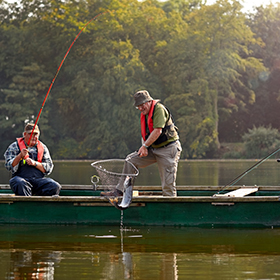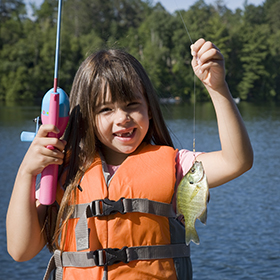If I think long and hard enough I can remember buying my first boat. I prefer not to think of it ‘cause it makes me feel old. That said, I do remember being far more interested in launching and running my boat than wanting to fill out the registration paperwork.
If I think long and hard enough I can remember buying my first boat. I prefer not to think of it ‘cause it makes me feel old. That said, I do remember being far more interested in launching and running my boat than wanting to fill out the registration paperwork. Who wouldn’t be? A new boat is exciting, so here are a few pointers so you can be compliant with rules and regulations. You can knock these out in no time flat and get on the water without problems.
Credit: PA Fish and Boat Commission
Not every state’s DMV registers boats. In many states (like Texas) the Parks Division or the Fish and Game Department are responsible for boat registrations. Click here to find your specific state requirements.
Forms are available to download and can be filled out prior to registration. You’ll need to fill out the registration paperwork, bring your bill of sale, proof of tax payment, and your fee. New boats require an MSO (manufacturer’s statement of origin which is where the boat was made).
Fees are usually determined by boat length. The bigger your boat the more the registration costs.
Some states require a safe boating certificate while others request a boater’s license, so check with your state to be sure.
Options for registration are by mail, in person, or online.
HIN (Hull Identification Number) which is a combination of letters and numbers must be decaled or painted in the forward part of both sides of the boat, preferably the bow, with numbers reading from left to right. They must be in block format at least 3 inches high, and contrast with the hull color. Letters must be separated from the numbers by a 3 to 4 inch space or a hyphen. For example: MA 1234 TK or MA-1234-TK. Validation stickers must accompany the registration numbers and must be within four inches of the numbers.
Boats registered in a home state may be used for up to 60 days in a visiting state before they need to be registered in a new state.
Some boats don’t need to be registered, and again, it varies by state. The rule of thumb is that motorized boats of any length need to be registered, sailboats longer than 14 feet long need to be registered, and boats propelled by oars or paddles do not.
Registrations must be kept on the boat, and if it’s lost you can apply for a renewal.
Again, there are a lot of individual requirements in each state so click here to find out what is required where you live.
Credit: PA Fish and Boat Commission
Not every state’s DMV registers boats. In many states (like Texas) the Parks Division or the Fish and Game Department are responsible for boat registrations. Click here to find your specific state requirements.
Forms are available to download and can be filled out prior to registration. You’ll need to fill out the registration paperwork, bring your bill of sale, proof of tax payment, and your fee. New boats require an MSO (manufacturer’s statement of origin which is where the boat was made).
Fees are usually determined by boat length. The bigger your boat the more the registration costs.
Some states require a safe boating certificate while others request a boater’s license, so check with your state to be sure.
Options for registration are by mail, in person, or online.
HIN (Hull Identification Number) which is a combination of letters and numbers must be decaled or painted in the forward part of both sides of the boat, preferably the bow, with numbers reading from left to right. They must be in block format at least 3 inches high, and contrast with the hull color. Letters must be separated from the numbers by a 3 to 4 inch space or a hyphen. For example: MA 1234 TK or MA-1234-TK. Validation stickers must accompany the registration numbers and must be within four inches of the numbers.
Boats registered in a home state may be used for up to 60 days in a visiting state before they need to be registered in a new state.
Some boats don’t need to be registered, and again, it varies by state. The rule of thumb is that motorized boats of any length need to be registered, sailboats longer than 14 feet long need to be registered, and boats propelled by oars or paddles do not.
Registrations must be kept on the boat, and if it’s lost you can apply for a renewal.
Again, there are a lot of individual requirements in each state so click here to find out what is required where you live.









